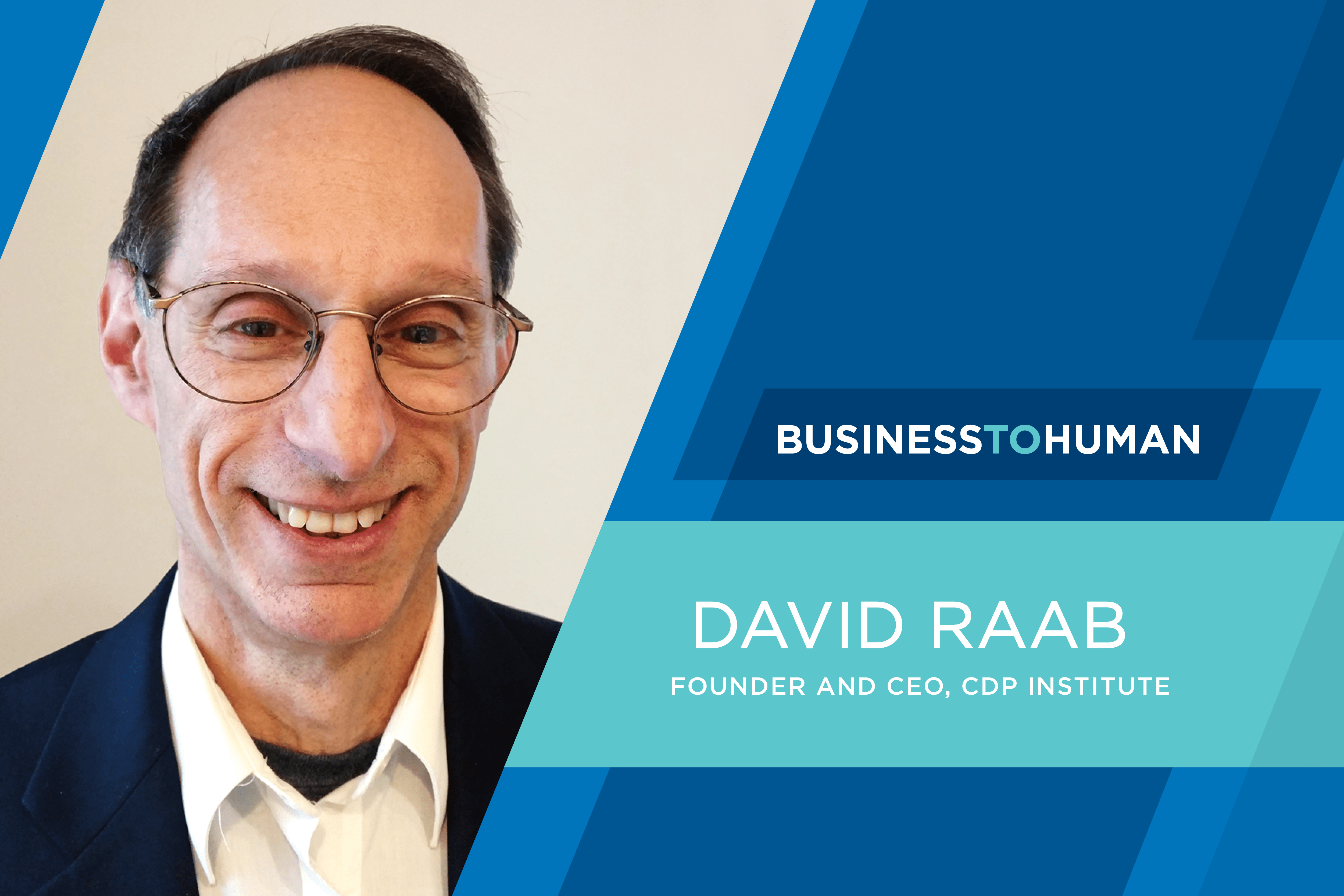The ability to map the entire customer journey is valuable in today’s marketing world. Having a Customer Data Platform gives marketers the insight they need to create a personalized experience for every customer.
This is the topic covered by our guest, David Raab of the CDP Institute, in an episode of our Business to Human podcast.
About the guest:
David Raab is the Founder and CEO of the CDP Institute, where his mission is to educate companies on how to use their customer data. David has spent most of his career as a marketing technology consultant, and six years ago decided to create the CDP Institute. In this episode, David talks about what a Customer Data Platform is and why it matters.
What is a Customer Data Platform (CDP)?
The formal definition of a CDP is packaged software that builds a unified persistent customer database that’s accessible to other systems.
According to David, that can be distilled into three simple words: CDPs build profiles.
A CDP is software that does a lot of heavy lifting. It collects data, puts that data into customer profiles, cleans that data, unifies data from different sources concerning the same client and then goes on to share that data.
Other marketing technologies often will create customer data through interactions on your website, emails, etc. but CDPs take it a step further by being able to import data from external sources.
“The CDP pulls the data out of all those systems and builds that unified profile with the data from all of those systems,” explains David. “You get a more complete picture of the customer and you share it with all the other systems.”
How marketers can take advantage of a CDP
In the role of a data analyst, data preperation and research are a major part of every project that they interact with.
Typically, when a new project comes to light and that data prep starts back up again, analysts have to start at square one once again. This is where a CDP comes in. With a CDP, analysts avoid having to start over in terms of collecting data and instead have an updated data source to pull from that has all the information on your customer, past interactions and projects.
In the eyes of a marketer, a CDP has several benefits from campaigns to customer engagement. Because a CDP is all-encompassing, the benefits include better segmentations in campaigns, better targeting of an audience and higher response rates.
The CDP gives a complete view of a customer and saves data from things like email responses and website interactions so that your marketing efforts can be more intentional.
Where the CDP industry started and where it stands today
Traditionally, all things data in the marketing world were done apart from the company itself.
Agencies would hire outside sources or, sometimes, have their IT department create databases to which the company’s tools for predictive modeling and campaign management were then attached.
In 2013, when CDPs first made their way into the marketing world, they offered an everything-in-one alternative to collecting data and putting it to use. Softwares were now creating the database themselves and running the predictive modeling and campaign management applications.
Today, most major corporations implement a CDP. It has become more than just a marketing effort, expanding to various other departments since the data comes from all over the corporation, which can benefit every other team.
What to watch out for when implementing CDPs into your marketing stack
With data being the thing that a CDP literally runs on, data quality is the first thing a company should look at when implementing a CDP into their routine.
“Data quality is probably the thing that causes the most problems during the initial implementation stage,” explains David. “People assume that their data is good, which is never a safe assumption — in fact, the safe assumption is that the data is not good.”
Ensuring that your data is clean and well-collected will make the transition to a CDP smoother for all. And ensuring that all of your teams are on the same page when making the transition will allow you to reap maximum benefits from the software.
A CDP, when used to its full potential, will involve various departments and their data, so it’s important to get every team on track and working towards the same goal to create those cohesive customer profiles.
Want to hear more about CDPs and the best ways to implement them into your company? You can listen in on episode two of the Business to Human Podcast. If you like what you hear, consider subscribing to the show on Apple Podcasts.
